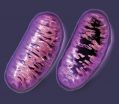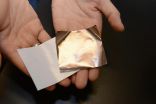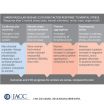(Press-News.org) A small study led by investigators at MassGeneral Hospital for Children (MGHfC) and Johns Hopkins University School of Medicine has found evidence that daily treatment with sulforaphane – a molecule found in foods such as broccoli, cauliflower and cabbage – may improve some symptoms of autism spectrum disorders. In their report being published online in PNAS Early Edition, the investigators describe how participants receiving a daily dose of sulforaphane showed improvement in both behavioral and communication assessments in as little as four weeks. The authors stress that the results of this pilot study – conducted at the MGHfC-affiliated Lurie Center for Autism – must be confirmed in larger investigations before any conclusions can be drawn about sulforaphane's therapeutic benefit.
"Over the years there have been several anecdotal reports that children with autism can have improvements in social interaction and sometimes language skills when they have a fever," explains Andrew Zimmerman, MD, a co-corresponding author of the current report who also published a 2007 paper documenting the fever effect. "We investigated what might be behind that on a cellular level and postulated that it results from fever's activation of the cellular stress response, in which protective cellular mechanisms that are usually held in reserve are turned on through activation of gene transcription." Affiliated with the MGHfC Department of Neurology, Zimmerman is now based at UMass Memorial Medical Center.
Sulforaphane was first isolated in the 1990s by Paul Talalay, MD – co-corresponding author of the PNAS Early Edition paper and now a professor of Pharmacology and Molecular Sciences at Johns Hopkins – and his group also found that the chemical supports key aspects of the cell stress response. Zimmerman, who was based at Hopkins when he published the fever paper, approached members of Talalay's team to propose investigating sulforaphane's possible benefits for treating autism. While the mechanism underlying autism and other disorders on the autism spectrum remain largely unknown, several molecular abnormalities – including some related to the cellular stress response – have been identified. After Zimmerman moved to MGHfC in 2010, the trial was initiated at the Lurie Center in Lexington, Mass.
The study enrolled 44 young men, ages 13 to 27, who had been diagnosed with moderate to severe autism spectrum disorder. Participants were randomly assigned to a daily dose of either sulforaphane – extracted from broccoli sprouts – or a placebo, with neither investigators, participants nor their caregivers knowing who was receiving the study drug. Participants were assessed using standardized measurements of behavior and social interaction – some completed by caregivers, some by study staff – at the outset of the study and at 4, 10 and 18 weeks after treatment began. Treatment was discontinued after 18 weeks, and additional assessments of 22 participants were conducted 4 weeks later.
Study lead author Kanwaljit Singh, MD, MPH – of MGHfC, the Lurie Center and UMass – says that among the 40 participants who returned for at least one evaluation, the average scores for each of the assessments were significantly better for the 26 participants receiving sulforaphane than for the 14 who received a placebo. Even at the 4-week visit, some caregivers reported a noticeable behavioral improvement, and by the end of the study period, both study staff and family members correctly guessed the assignments of many participants. Overall, 17 of the 26 participants who received sulforaphane were judged by their caregivers to have improvements in behavior, social interaction and calmness while on active treatment.
After 18 weeks of treatment, the average scores on two assessments – the Aberrant Behavior Checklist and Social Responsiveness Scale – of those who received sulforaphane had decreased 34 and 17 percent, respectively – indicating improvement in factors such as irritability, lethargy, repetitive movements, hyperactivity, communication, motivation and mannerisms. Assessments using the Clinical Global Impression scale indicated that 46 percent of sulforaphane recipients exhibited noticeable improvement in social interaction, 54 percent in aberrant behaviors, and 42 percent in verbal communication. Most but not all of the improvements had disappeared by the 22-week reassessment, supporting the probability that changes had been the result of sulforaphane treatment.
"When we broke the code that revealed who was receiving sulforaphane and who got the placebo, the results weren't surprising to us, since the improvements were so noticeable," says Zimmerman, now a professor of Pediatric Neurology at UMass. "The improvements seen on the Social Responsiveness Scale were particularly remarkable, and I've been told this is the first time that any statistically significant improvement on the SRS has been seen for a drug study in autism spectrum disorder.
"But it's important to note that the improvements didn't affect everyone – about one third had no improvement – and the study must be repeated in a larger group of adults and in children, something we're hoping to organize soon," he adds. "Ultimately we need to get at the biology underlying the effects we have seen and study it at a cellular level. I think that will be done, and I hope it will teach us a lot about this still poorly understood disorder."
INFORMATION:
Additional co-authors of the PNAS study are Susan Connors, MD, MGHfC, Eric Macklin, PhD, MGH Biostatistics; and Kirby Smith and Jed Fahey, Johns Hopkins University School of Medicine. The study was supported by grants from the Nancy Lurie Marks Family Foundation, the Hussman Foundation, the Lewis B. and Dorothy Cullman Foundation, the Agnes Gund Foundation, the N of One Foundation and the Brassica Foundation for Chemoprotection Research.
Massachusetts General Hospital (http://www.massgeneral.org), founded in 1811, is the original and largest teaching hospital of Harvard Medical School. The MGH conducts the largest hospital-based research program in the United States, with an annual research budget of more than $785 million and major research centers in HIV/AIDS, cardiovascular research, cancer, computational and integrative biology, cutaneous biology, human genetics, medical imaging, neurodegenerative disorders, regenerative medicine, reproductive biology, systems biology, transplantation biology and photomedicine.
The discovery of a "maternal age effect" by a team of Penn State scientists that could be used to predict the accumulation of mitochondrial DNA mutations in maternal egg cells -- and the transmission of these mutations to children -- could provide valuable insights for genetic counseling. These mutations cause more than 200 diseases and contribute to others such as diabetes, cancer, Parkinson's disease, and Alzheimer's disease. The study found greater rates of the mitochondrial DNA variants in children born to older mothers, as well as in the mothers themselves. The research ...
BOSTON – Increased consumption of table sugar and high-fructose corn syrup has been linked to rising rates of obesity and type 2 diabetes in the United States and throughout the world. Both sweeteners are commonly found in processed foods and sugar-sweetened beverages, and both are made up of nearly equal amounts of two basic sugars, glucose and fructose.
The effects of glucose ingestion in humans are well understood, in part, because they are easily assessed by performing a Glucose Tolerance Test, which measures serum glucose levels after glucose ingestion and ...
Long assumed to be destructive to tissues and cells, "free radicals" generated by the cell's mitochondria—the energy producing structures in the cell—are actually beneficial to healing wounds.
That's the conclusion of biologists at UC San Diego who discovered that "reactive oxygen species"—chemically reactive molecules containing oxygen, such as peroxides, commonly referred to as free radicals—are necessary for the proper healing of skin wounds in the laboratory roundworm C. elegans.
In a paper published in the October 13 issue of the journal ...
Scientists at Imperial College London have developed a new cancer drug which they plan to trial in multiple myeloma patients by the end of next year.
In a paper published today in the journal Cancer Cell, the researchers report how the drug, known as DTP3, kills myeloma cells in laboratory tests in human cells and mice, without causing any toxic side effects, which is the main problem with most other cancer drugs. The new drug works by stopping a key process that allows cancer cells to multiply.
The team have been awarded Biomedical Catalyst funding from the Medical ...
Scientists from the Department of Life Science, National Taiwan Normal University and the Biodiversity Research Center, Academia Sinica described a new endemic land snail species. The new species Aegista diversifamilia was long confused for the widely distributed A. subchinensis. The study was published in the open access journal ZooKeys.
Aegista subchinensis was first described in 1884 and was thought to be widely distributed in Taiwan. In 2003, one of the co-authors Dr. Yen-Chang Lee noticed that there was morphological divergence between the western and eastern populations ...
WASHINGTON, DC – OCTOBER 10, 2014 - A robust, broad spectrum antibiotic, and a gene that confers immunity to that antibiotic are both found in the bacterium Staphylococcus epidermidis Strain 115. The antibiotic, a member of the thiopeptide family of antibiotics, is not in widespread use, partly due to its complex structure, but the investigators, from Brigham Young University, Provo, Utah, now report that the mechanism of synthesis is surprisingly simple. "We hope to come up with innovative processes for large-scale production and derivitization so that new, and possibly ...
Developing the cloak of invisibility would be wonderful, but sometimes simply making an object appear to be something else will do the trick, according to Penn State electrical engineers.
"Previous attempts at cloaking using a single metasurface layer were restricted to very small-sized objects," said Zhi Hao Jiang, postdoctoral fellow in electrical engineering, Penn State. "Also, the act of cloaking would prevent an enclosed antenna or sensor from communicating with the outside world."
Jiang and Douglas H. Werner, John L. and Genevieve H. McCain Chair Professor of ...
Stanford University scientists have developed a "smart" lithium-ion battery that gives ample warning before it overheats and bursts into flames.
The new technology is designed for conventional lithium-ion batteries now used in billions of cellphones, laptops and other electronic devices, as well as a growing number of cars and airplanes.
"Our goal is to create an early-warning system that saves lives and property," said Yi Cui, an associate professor of materials science and engineering at Stanford. "The system can detect problems that occur during the normal operation ...
SAN DIEGO – When the American Academy of Pediatrics (AAP) published its policy statement in 1999 discouraging electronic media use by children under 2, the focus was on television programs, videos and DVDs.
Over the past 15 years, the technology landscape has changed dramatically. Toddlers now have access to a dizzying array of touchscreen devices that are available anywhere and everywhere. Although the AAP has revised its media use policy over the years based on the latest research, the message regarding toddlers' exposure to screens is the same.
Given the ...
WASHINGTON (Oct. 13, 2014) — Men and women have different cardiovascular and psychological reactions to mental stress, according to a study of men and women who were already being treated for heart disease. The study, published today in the Journal of the American College of Cardiology, looked at 56 women and 254 men diagnosed with heart disease enrolled in a larger REMIT study of the impact of the medication escitalopram on heart disease induced by mental stress.
After undergoing baseline testing, participants carried out three mentally stressful tasks — ...



